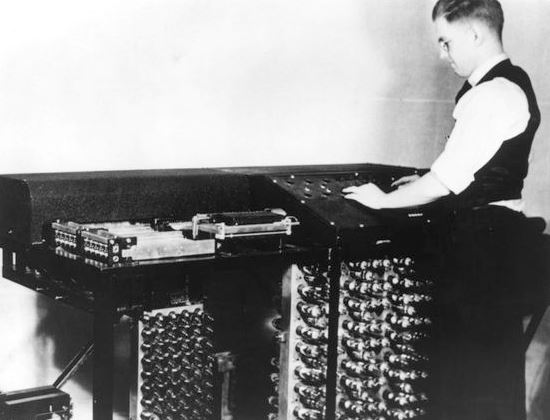The Atanasoff–Berry Computer (ABC) is a landmark in the history of computing. Developed in the late 1930s and early 1940s, it was one of the first electronic computers and played a crucial role in the evolution of digital technology. This article explores the Atanasoff–Berry Computer’s development, features, and impact on modern computing.
1. Overview of the Atanasoff–Berry Computer
The Atanasoff–Berry Computer, often abbreviated as ABC, was an early electronic computer designed to solve systems of linear equations. Developed by physicist John Atanasoff and his graduate student, Clifford Berry, it represents a significant milestone in computing history.
A. Historical Context:
- Early Computing: Before the ABC, most computers were mechanical or electro-mechanical. The ABC marked a shift towards electronic computing, using vacuum tubes for computation.
B. Development and Purpose:
- Origins: The development of the ABC began in 1937 at Iowa State College (now Iowa State University). The primary goal was to create a machine capable of solving complex mathematical problems more efficiently than existing methods.
2. Key Features and Innovations
The Atanasoff–Berry Computer introduced several groundbreaking features that laid the groundwork for future electronic computers.
A. Electronic Computation:
- Vacuum Tubes: Unlike mechanical computers, the ABC used vacuum tubes to perform calculations, which allowed for faster and more reliable computation.
B. Binary System:
- Binary Arithmetic: The ABC employed binary number systems for computation, a fundamental concept in modern computing that uses only two digits, 0 and 1.
C. Separating Memory and Computing:
- Dual Components: The ABC had separate components for memory and computation, a design principle that influenced future computers. It used punched cards for input and magnetic drums for storage.
D. Solving Linear Equations:
- Specialization: The primary function of the ABC was to solve systems of linear equations, a task that it performed with greater speed and accuracy than manual methods.

3. Historical Impact and Legacy
The Atanasoff–Berry Computer had a profound impact on the development of modern computers and computing concepts.
A. Influence on Later Computers:
- ENIAC and UNIVAC: The design principles of the ABC influenced the development of subsequent computers like the ENIAC and UNIVAC, which built upon its electronic computation and binary arithmetic.
B. Patent Disputes:
- Legal Recognition: Although the ABC was not fully operational during its time, its concepts were recognized in later patent disputes. The patent for the invention of the electronic computer was awarded to Atanasoff and Berry, acknowledging their contributions.
C. Revival and Recognition:
- Historical Recognition: The significance of the ABC was rediscovered in the 1970s, leading to a reassessment of its place in computing history. It is now celebrated as a pioneering machine in the field of electronic computing.
4. Technical Details and Specifications
Understanding the technical details of the Atanasoff–Berry Computer provides insight into its design and functionality.
A. Hardware Components:
- Vacuum Tubes: The ABC utilized approximately 300 vacuum tubes for its electronic operations.
- Punched Cards: Used for input, punched cards allowed for the manual entry of data into the computer.
- Magnetic Drums: These provided storage for data and were a precursor to modern magnetic storage devices.
B. Computational Process:
- Iterative Calculation: The ABC solved systems of linear equations through iterative calculations, demonstrating the potential of electronic computation for complex mathematical problems.
C. System Architecture:
- Memory and Processing: The separation of memory and processing functions in the ABC was a novel approach, leading to improved efficiency and reliability in computing.
5. Modern Relevance and Educational Value
The Atanasoff–Berry Computer continues to be relevant in the study of computer history and technology.
A. Educational Importance:
- Teaching Tool: The ABC is often studied in educational settings to illustrate the evolution of computing technology and the principles of early electronic computation.
B. Technological Inspiration:
- Innovation Legacy: The ABC’s innovations in electronic computation, binary arithmetic, and system design continue to inspire modern computing technologies and advancements.
C. Preservation Efforts:
- Historical Preservation: Efforts to preserve and reconstruct the ABC provide valuable insights into the early development of computers and the contributions of its inventors.
The Atanasoff–Berry Computer stands as a pivotal milestone in the history of computing. Its innovations in electronic computation, binary arithmetic, and system design laid the foundation for modern digital technology. By understanding the significance of the ABC, we gain a deeper appreciation for the technological advancements that have shaped our current computing landscape. The ABC’s legacy continues to influence and inspire the field of computer science and technology, highlighting the enduring impact of early pioneers in the field.
